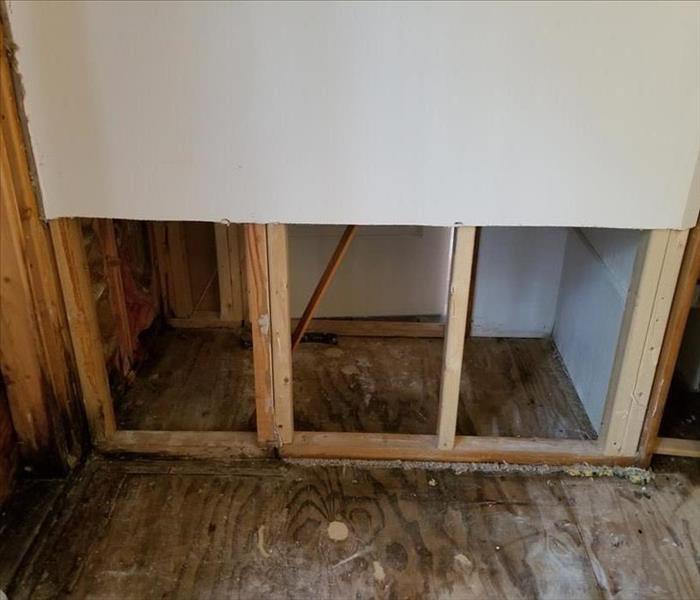Flood Cuts 101
6/7/2022 (Permalink)
After flooding occurs at your Flint, TX, home, it may be necessary to tear out part of the drywall in the affected area to address contamination and other concerns. While the temptation to take a hammer to your soggy drywall may be (understandably) high after a flood, a flood cut is the smarter move.
What Is a Flood Cut?
When your preferred water damage restoration company gets down to work, one of the first things the team may want to do is make a flood cut to your drywall. This is a calculated cut performed at least 12 inches above the highest spot reached by the creeping water. Because of this, it typically results in half of the lower part of the wall being cut away.
Are Flood Cuts Necessary After Any Kind of Flooding?
Any time rising water affects your home, a flood cut may be required. That said, it's most commonly associated with severe weather events such as the following:
- Thunderstorms
- Tropical storms
- Hurricanes
- Rivers, lakes and streams overflowing
- Overflowing dams and similar barriers
What's So Bad About Rising Water?
There are two main reasons why rising water is a problem for your drywall. First, it's often classified as Category 3 water, a.k.a. black water, due to how highly contaminated it is. All water from storm surges and sewage, for example, is considered Category 3.
What's more, once the drywall is touched by Category 3 water, it's impossible to ever get it fully clean. This is due to its porous surface; once those pathogens or other toxins get in, they're never coming back out in their entirety.
After flooding, it's imperative to remove any sodden items from your home for the continued safety of everyone who lives there. This goes double for wet drywall. With a flood cut, trusted professionals gain better access to the source of the problem and will dispose of any contaminated building materials safely — and with zero involvement from you.



 24/7 Emergency Service
24/7 Emergency Service
